Don’t be afraid to play some silly but educational games. Toddlers learn through play. You might be surprised by what they can learn.
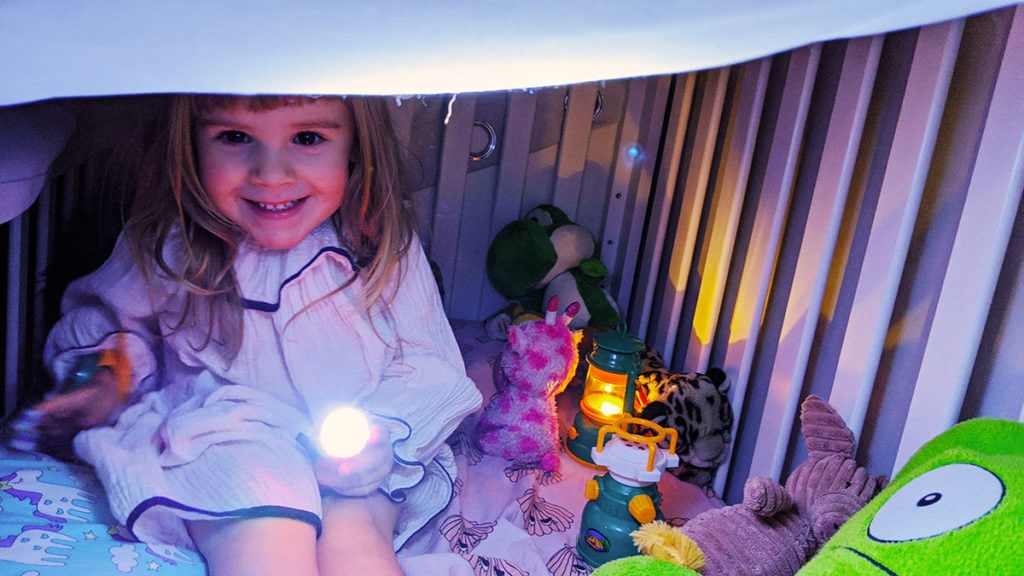
For young kids, playtime is learning time. Of course, reading books together is incredibly beneficial, but when reading time is done, don’t be afraid to play some silly but educational games. Toddlers learn through play. You might be surprised by what they can learn. Read on to find out how popular toddler games are secretly educational.
Hide and Seek
Hide and Seek is a problem-solving game. Kids have to learn the best places and ways to hide so they cannot be found. Seekers must remember the best hiding spots to check for other people. You might have seen photos of young kids “hiding” in plain sight. These young kids have not developed spatial awareness yet. Example, my 2 year old daughter Enceladus is terrible at this game right now, but it makes me laugh when I have to find her.
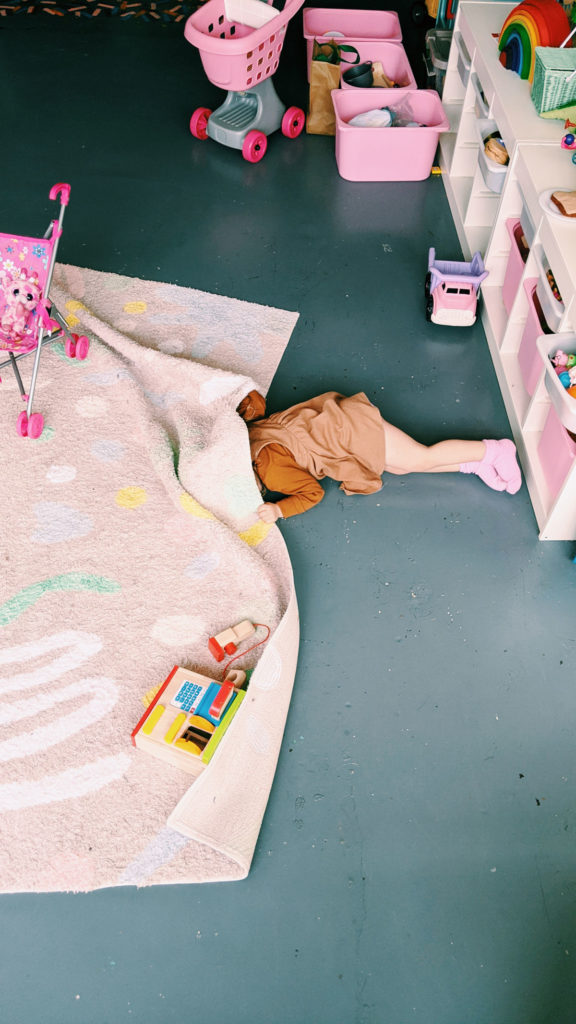
But in order to get better at the game, they will become more and more spatially aware. Another educational advantage is teaching young kids how to count forward or backward to or from ten, or even twenty. Once we get this skill down, we forget how tricky it can be for young kids. This is a great time to practice accurate counting time and time again.
Build a Blanket Fort
Don’t underestimate a good blanket fort building session. Gather the whole family together and start sourcing extra blankets, sheets, pillows, whatever you can find from around the house. Now get together and figure out a building plan. This is a great time for kids to be involved, both physically and mentally. They can help attach the blankets, while mentally problem solving issues that might come up such as a blanket being too short, or having to move items closer together.
Once the fort is built, let the imagination run wild! Dragons are attacking! Dinosaurs are nearby! Grab a flashlight and pretend it’s a torch! Blanket forts are one of our favorites, and easily take up 1-2 hours of imaginative play!

Duck, Duck, Goose
Duck, Duck, Goose is great for learning strategic thinking. The “goose” walking around the circle must pick a new “goose” that they think won’t tag them. This helps kids learn to think ahead, plan, and weigh their options accordingly. When they choose a person to tag, they have to make it all the way back around the circle without being tagged to stay as the “goose”. If they are tagged the new person becomes the “goose” and they have to sit in the empty spot. The kids sitting in the circle have to practice patience while waiting and good listening skills in case they are picked.
PS. Love this game? Check out the Duck & Goose book series too.
Red Light, Green Light
Do you have a kid that is always on the go? Red Light, Green Light is great for teaching patience and listening skills. We all know how well young kids tend to listen. With this game, however, kids must stay frozen during red lights, but they must also pay close attention and listen to take advantage of the most time of the green light. We also know that children do not love standing still. Young kids have to reign in that impulsive nature to make sure they don’t move too soon and risk getting sent back to the start.
Musical Chairs
This educational game teaches kids to resolve disagreements, how to handle disappointment, and practice patience and listening skills. As the game progresses, children must learn to accept being the one “out”, and practice patience and waiting for a new game to start. There are often arguments as to who got to a chair “first.” It’s important that an adult help mediate, but it’s just as important to guide kids through resolving the disagreement themselves peacefully. While playing, children must be patient and listen closely to the music for it to start and stop. Once out, kids have to practice patience to wait for the other players to finish the game. Encourage participation from the out players by cheering for those still playing.
Jumbo Bananagrams
Bananagrams consists of a banana pouch full of letter tiles. The Jumbo version have big 3-inch tiles that are better for smaller hands. This is great for toddlers to practice identifying letters, letter sounds, and even matching letters up. Practice singing ABCs by laying out the matching tiles. Look at the letter shapes or group letters by sounds. There are so many fun games you can come up with when you have a bag of letter tiles! It’s great for all ages.
Guess Who
Guess Who is fun and can be customized for all ages. It’s easy to make your own cards (or find them online) for the boards and to pick. In this way, you can create a game great for young kids by simplifying the people, animals, or scenes on the cards. Using the cards that come with the game can also teach kids to recognize faces and how to pay attention to detail. As kids learn more they can play with more detailed cards, learning to pay attention to the little features that distinguish between similar traits.
Simon Says
Simon Says is one of our favorite educational games for helping kids learn leadership roles and how to pay attention to instructions. The leader must learn how to pay attention to those they lead to catch those that mess up and to mix up the given orders to try and catch people off guard. Those listening must pay close attention to the leader’s commands and how they say them. They get extra motivation to listen closely and wait for the complete instruction because if they don’t, they will be the only ones doing the silly action.
Parachute Games
Playing parachute games is a fun way for kids to learn teamwork and work on gross motor skills. Kids must hold the edges of a parachute, or sheet, and bounce a ball or some other fairly soft object around. They must work together to keep it from flying off of the parachute but still keep it moving. Make it extra challenging by placing multiple objects on top to bounce around. There is also a game when they have to time lifting up the parachute, so a single kid has enough time to run underneath before it comes back down.
Hopscotch
This classic game can be played outside with chalk and a small rock, or indoors with some masking tape and a small stuffed toy. Kids can practice motor skills hopping from box to box and trying to avoid the box with the object in it. Boxes can also contain numbers and/or letters to practice counting and letter recognition. You can also up the challenge by having kids spell out a short word for each box or solve a simple math equation before they can move on. This added challenge also challenged their balancing skills by making them stay in one place for longer.
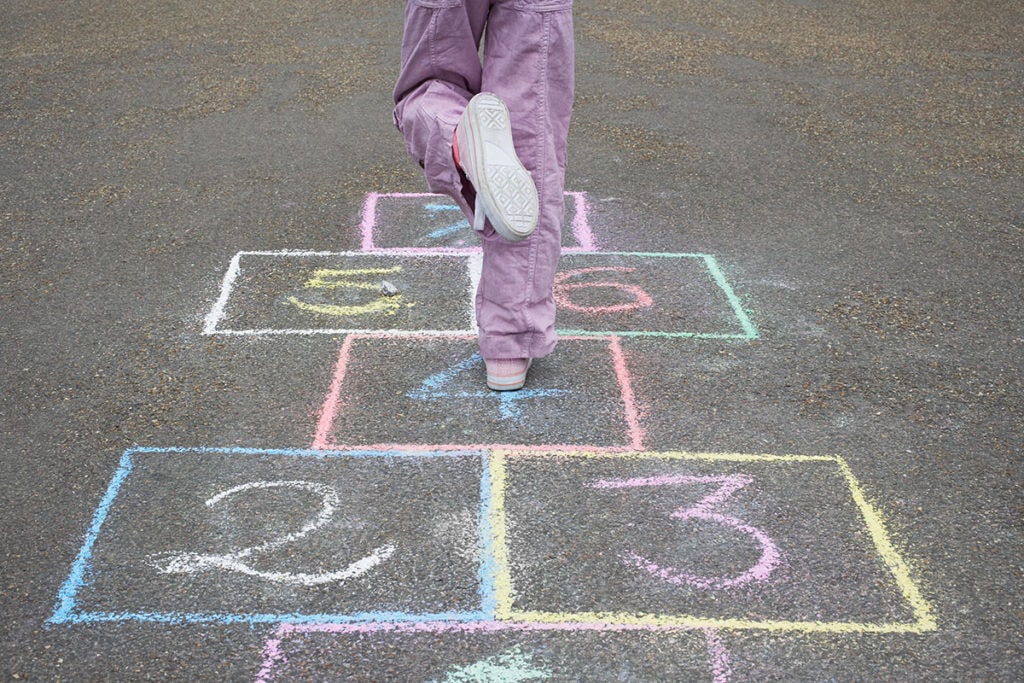
Row Your Boat
Not just a nursery rhyme, this fun song can be used as an educational game as well. Kids can pair up facing each other knees up and hold hands or sit in a circle linking arms. As they sing “Row, Row, Row you boat” they must move in time with one another without breaking the link. Try speeding up or slowing the song down to change the pace mid-song so they have to adjust. This teaches kids about physical self-awareness and their own physical presence in relation to others. As the song goes on, try pausing the music to make them suddenly freeze. If a link is broken, those players can be “out”. However, there does not have to be winners or losers in this “game” but it teaches important awareness skills either way.
Sleeping Lions
This educational game is not as well know but a lot of fun. All but a single child all lay down and pretend to sleep. The one awake “lion” stalks around and tries to wake up all the sleeping “lions”. However, they cannot touch anyone. They have to cajole or persuade the other lions to wake up in other ways. This teaches the “sleeping” kids how to try and stay focused. The one to stay asleep the longest wins the game, so they must focus on their goal of not moving or making a sound. This also has the advantage of teaching kids how to focus in busy environments later in life. It also teaches the “awake” leader skills in persuasion, and in restraint. They must keep their hands to themselves but still convince the others to wake up.
Uno
The family-favorite card game can be played by even the youngest family members, though they may not follow the set rules. The cards are great for learning numbers and basic colors and how to match similar cards. They may need to some to start off, but even toddlers will catch on quickly!
Operation
Another classic board game, Operation is great for improving fine motor skills and learning about the human body. While it’s preferable to teach kids the anatomically correct names for body parts, it’s also a fun lesson on where the fun names come from. Kids can also learn basic math and money skill when you utilize the cards and money system in the game.
I hope you found these Secretly Educational Games for Toddlers helpful! If you have more ideas, feel free to leave them in the comments!
recipes to make with kids
Making recipes can also be educational! Think of all the measuring and gathering ingredients needed. Here are some of my favorite kid friendly recipes.
6 Inch Cake , Spinach Cupcakes, Sprinkle Birthday Cake Muffins, Strawberry Milk, Mini and Moist Banana Muffins, Shredded Zucchini Tots and Christmas Cookies to Make With Kids.
Pin for later:
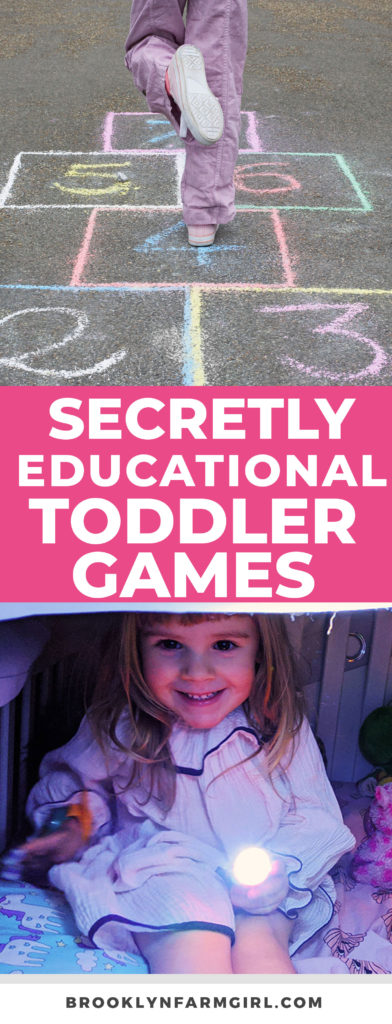


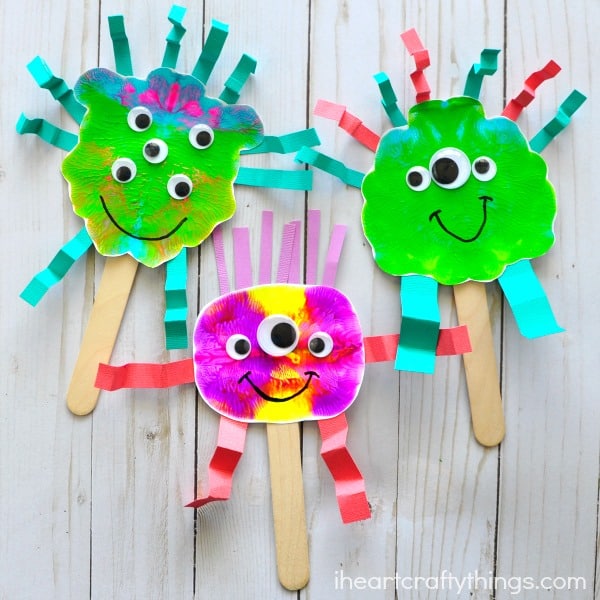

Leave a Comment